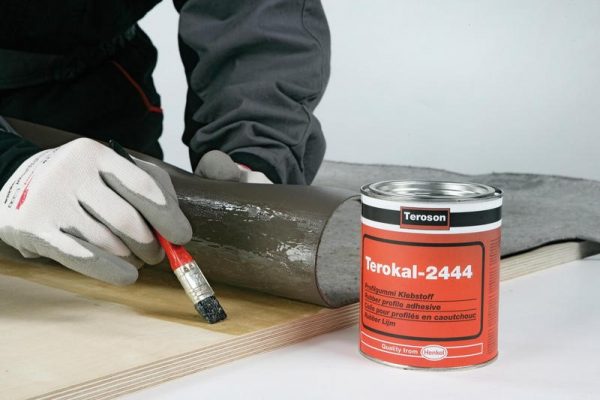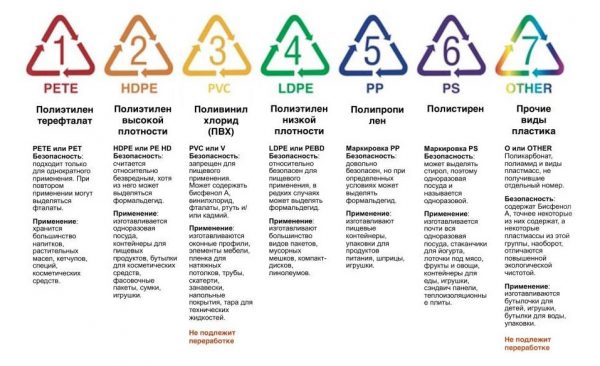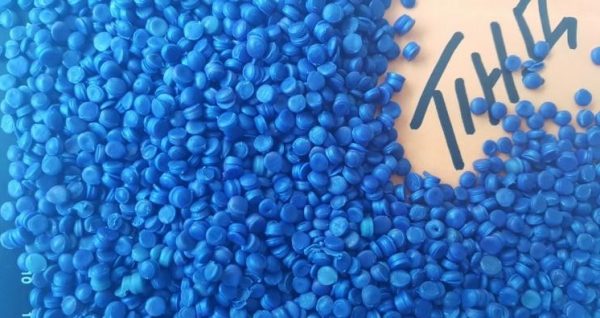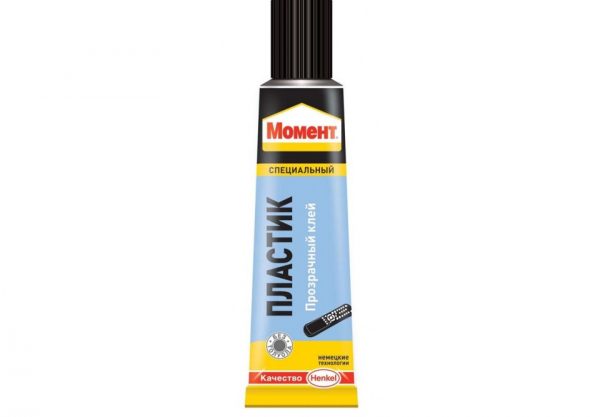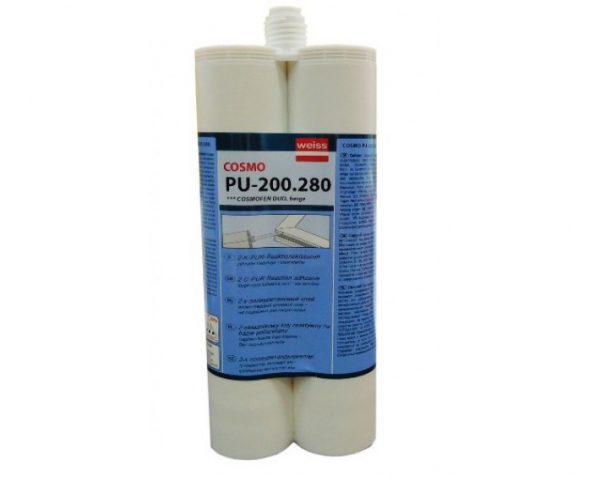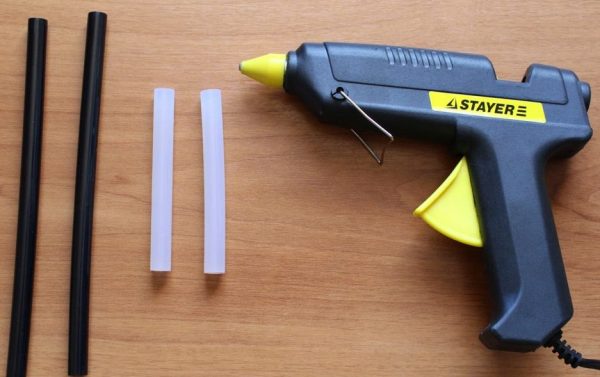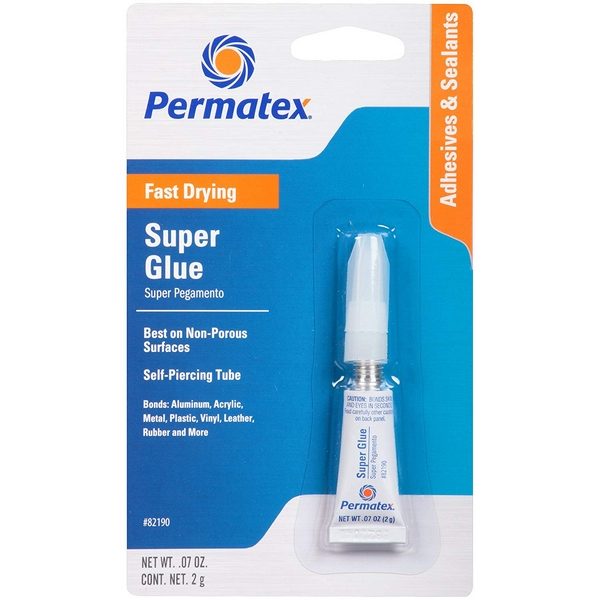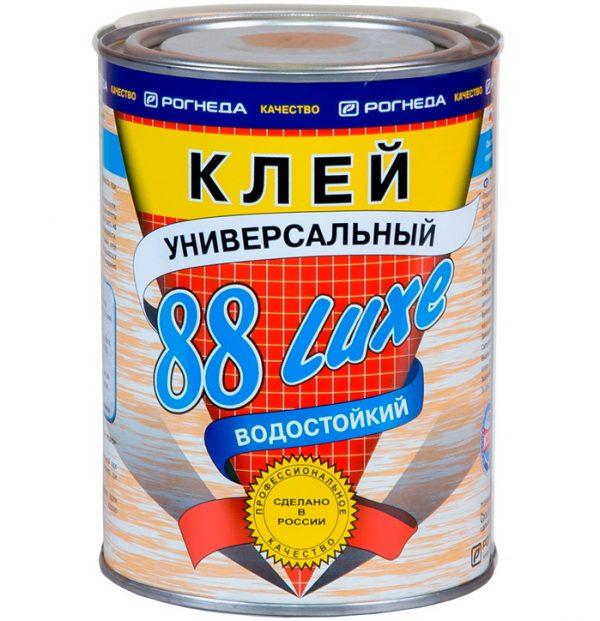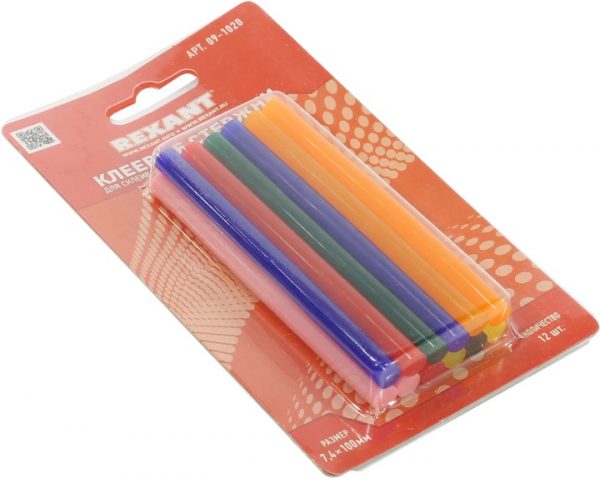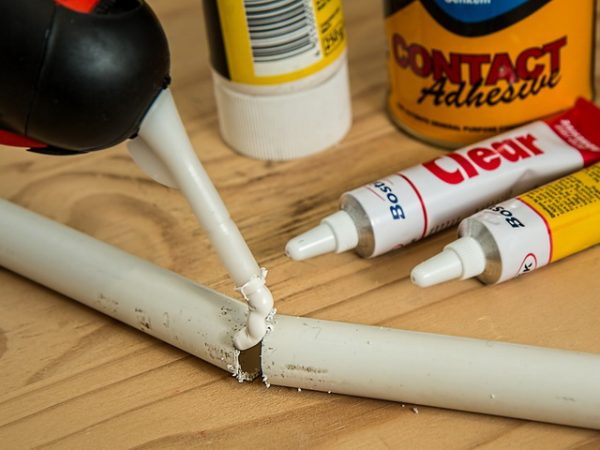Plastic products are firmly established in everyday life. Different types of plastics are suitable for the manufacture of kitchen utensils, sewage and water supply systems, car bumpers and interior elements, it is impossible to list all their areas of application. In the event of a product breakdown, repairs can be made with one's own hands, because high-quality adhesive compounds are sold in stores. It is important only to choose the right glue for plastic so that it meets all the specified parameters.
- Determination of the type of plastic
- Plastic marking - what does it mean
- Polymer determination
- Labeling adhesive for plastic
- The main types of adhesives
- Liquid products
- Contact adhesives
- Reaction adhesives
- Hot melt adhesives
- How to glue plastic - instructions
- Glue for plastic: the best means
- The best superglue for plastic
- The best waterproof glue for plastic
- The best heat-resistant adhesive for plastic
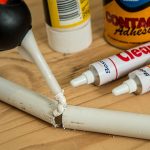
Determination of the type of plastic
In order to firmly glue plastic, the adhesive composition must be suitable for the specific type of base material. Before buying, you should find out what this product is made of, and only then it will be possible to choose the best glue for plastic. If the adhesive contains aggressive substances and strong solvents, they can not only deform, but also completely dissolve the plastic on which the hole appears.
to contents ↑Not too strong glue also will not work: its adhesion to the surface is weak, and the part is firmly glued. They will not be able to glue the surfaces together or with other materials. Often, a load-bearing composition is required, in other cases the glue is required to be frost-resistant, since the item will be used outdoors.
Plastic marking - what does it mean
According to regulatory documents, manufacturers are required to label plastic products with special symbols. For example, if an item is made from recyclable material, it is marked with a triangle with arrows on the sides. This means that the plastic is reused. In the triangle, numbers (1-7) are set, as well as a special abbreviation. According to this designation, you can clarify the type of plastic and choose the appropriate glue for it.
to contents ↑Polymer determination
Different plastic models have different composition. Depending on its constituent substances, obtained properties and technical characteristics, plastic can be marked according to the following list:
- PET (PETE). It is a low-pressure polyethylene (polyethylene terephthalate). It is engaged in the production of food-grade plastic, food packaging, and transparent bottles for beverages are made from it. In addition, PET is intended for the manufacture of electrocapacitors for radio engineering, electrical products, insulators, containers for cosmetics.
- HDPE Sealed low pressure polyethylene. This is a more rigid material, it is used for packaging for household chemicals, cable insulation, containers, utensils, and shrink film.
- PVC (V or PV). This is PVC (polyvinyl chloride) - a popular material from which slopes, arched corners and other elements of plastic windows are made, panels on the wall and for an apron in the kitchen, car parts, baseboards and moldings, furniture, doors. PVC is also suitable for non-food bottles, cans, buckets and linoleum.
- LDPEFrom low-density polyethylene produce children's toys, packaging, various containers, pipes for cold water.
- PP Polypropylene is the basis for sewer polypropylene pipes, disposable tools, appliances, heat-resistant dishes, bumpers for cars, household appliances. It is a very strong, solid, resistant to the action of temperature differences material. Of all types of plastic, PP is the most resistant to the influence of aggressive substances, it practically does not enter into chemical reactions. PP plastic products can be microwaved.
- PS. Under this marking is polystyrene, which is suitable for the manufacture of dishes, interior panels of the refrigerator. Also, the material is used in construction. Foamed polystyrene is a polystyrene foam (polystyrene foam) that serves as a good heat insulator.
- Other. This group includes other types of plastic, which are composed of impurities of polymers, paper, foil and are not recycled. This also includes modern ABS (ABS or ABC) - a super strong material, which is a technical thermoplastic resin made on the basis of acrylic nitrile, butadiene and styrene.
Labeling adhesive for plastic
What is the best glue to choose for plastic? To glue the plastic, you need to carefully familiarize yourself with the marking on the product itself, after which it will be possible to choose the appropriate composition. There is another way to check the suitability of the adhesive: you need to take a piece of plastic, set fire. According to the smell, professionals can easily determine the type of material, but for a beginner this can be an impossible task.
Most often on sale there are compounds with the following markings:
- PP - adhesive for polypropylene;
- PE - adhesive for polyethylene;
- PS - glue for polystyrene;
- PC - adhesive for polycarbonate;
- PUR - polyurethane composition;
- PMMA - glue for organic glass;
- PA 66 - adhesive compositions for polyamide;
- PVC - means for gluing PVC;
- ABS - adhesives for acrylonitrile copolymer;
- PLA - means for polylactide.
Unfortunately, the compositions of some manufacturers have symbols that do not coincide with the standard marking on the packaging, which seriously complicates the choice. Such a feature is "famous", mainly by Chinese manufacturers. In such situations, it is better to carefully read the instructions for use, and not to trust the notation.
to contents ↑The main types of adhesives
Plastic, like metal, is smooth, so gluing it is harder than porous materials. Often for this purpose, the method of cold welding is used - the connection of parts with adhesive compounds. Glue dissolves the surface of the plastic, and after strong compression, the parts mutually penetrate each other. This ensures high grip quality. Adhesives can vary in composition and properties, but they almost always have a solvent for synthetic polymers.
to contents ↑Liquid products
Liquid glue has a water base, so it is the least powerful in adhesion of all varieties. After application to the base, water begins to evaporate, due to which the structure of the adhesive becomes viscous, the surfaces are bonded to each other. Drying the composition for a long time - more than a day. Usually it is used for repair, assembly of small objects, which during operation are not subjected to excessively high loads. The advantage is the absence of plastic deformation, which is very important for small products and thin materials. An example of glue is PVA, which is suitable for most types of plastic.
to contents ↑Contact adhesives
Superglue is often called contact, which is familiar to everyone, is sold everywhere, is inexpensive. It is used if you need increased strength of the finished structure. The tool is quick-drying, adheres to the surface in seconds, they can be glued plastic tightly. For complete drying, it is better to leave the product without movement for a day.
The disadvantages of contact adhesives include toxicity of the composition, unpleasant odor, as well as unsuitability for moving joints, because the adhesive joint will be low elastic.The most famous glue of this group is “Moment” - a water-resistant, heat-resistant composition that can work as a sealant. Also, “Star”, “Modelist”, which do not contain dichloroethane (DCE) and other chloride compounds, are considered to be quality adhesives.
to contents ↑Reaction adhesives
For bonding plastic, a reaction composition is ideal (for example, Cosmofen). Most often it contains epoxy filler, polyurethane, solvents, resins, modifying additives. The two-component epoxy-based adhesive is stored in an anaerobic environment due to its strong packaging and hardens only when mixed with a hardener. One-component compositions are always based on a polyurethane component and are implemented in the form of a gel, foam. Epoxy adhesives are liquid and in the form of a paste for modeling.
Reactive adhesives after curing create the most durable, reliable, durable joint. Many compositions are high temperature, do not deteriorate even from strong heating. Additionally, the adhesive can be gas-resistant, moisture-resistant up to the possibility of working under water. After hardening, the adhesive joint can be drilled, ground, sharpened, painted without reducing its quality. The most widely used reaction compounds are in car repair, for ski restoration, sports equipment, and in construction.
to contents ↑Hot melt adhesives
In appearance, hot melt adhesives are solid rods that melt inside the glue gun. Hot-melt adhesive can be transparent, matte or color - red, yellow, etc. It is better not to work with such adhesives on concrete, metal, and other complex substrates, since there is no special bond strength, but it is quite possible to glue small parts. Most often, funds are used in creativity, to create crafts. An example of glue sticks is 3M brand products.
to contents ↑How to glue plastic - instructions
After acquiring the necessary composition, it is necessary to prepare the base. Parts should be cleaned, all dirt should be removed from them, be sure to do degreasing with acetone, alcohol or rinse with soap. Too smooth bases are best sanded with sandpaper, so the degree of adhesion will increase. Two-component compositions must be prepared according to the attached instructions.
Here is the procedure for working with plastic glue:
- take a brush with artificial bristles;
- apply glue to the surface with a thin layer;
- squeeze parts for a few seconds;
- immediately remove surplus funds;
- place the product under the press in a vice;
- leave to dry completely.
If dissimilar materials are combined, for example, plastic with wood, the adhesive should be applied to both substrates. When filling thin cracks, you can use a needle for better distribution of glue. For work in the bathroom, other wet rooms, only moisture-resistant glue is used. Despite the heat resistance of most products, this property applies only to glue, and the plastic itself can quickly deteriorate from elevated temperatures.
to contents ↑When working, it is important to regularly ventilate the room so as not to get poisoning by harmful fumes. Removing fresh and dried adhesive stains is easiest to do with special washes, they clean containers and tools.
Glue for plastic: the best means
The rating of good adhesives for plastics includes domestic and foreign brands, and several categories of products are presented on the market.
The best superglue for plastic
Work with superglue will occur most quickly, with such compositions it is easiest to repair small items at home. Here is a list of popular tools:
- Super Moment (100 rubles). Provides reliable bonding of various types of plastic, suitable for solving complex problems, quickly sets. The packaging is convenient, the nose is elongated.The glue is also suitable for ceramics, metal, glass.
- "The Power of Superglue" (50 rubles). Made in China, tightly fastens a variety of materials, including polymeric. Application by spot method is possible, which reduces consumption. The strength of the joint is more than 175 N. Of the minuses should indicate the liquid consistency of the gel.
- Econ Express (35 rubles). This glue is also produced by a Chinese manufacturer. It instantly sets, is suitable for dissimilar materials. The strength of the seam is 210 N, which at this price is an excellent indicator.
- Permatex Super Glue (130 rubles). The American roster is often recognized as the winner in a variety of categories. The adhesive load can be up to 245 N, in which it surpasses analogues. The tool can be used for the thinnest products, inaccessible areas.
- Cosmoplast 500. A composition based on cyanoacrylate is used in everyday life and in industry for the processing of any plastic products. With it, seals are glued to the windows, end sections are connected. It can serve as a sealant.
- UHU Plast. The glue is used for plastic and modeling, it has a convenient needle-tip. Provides the effect of cold welding on machined surfaces.
The best waterproof glue for plastic
The leader in the list is Cosmofen Plus-S glue (250 rubles). This composition is produced in Germany, has excellent quality at a low consumption. It can be used both on polypropylene pipes and on gutters, windows, doors, shields, and other products exposed to water. Glue is often called liquid plastic, because after hardening it literally merges with plastic.
Glue 88 Luxe (370 rubles) is designed for extensive work, because its packaging is large - 900 ml. The bonding efficiency will be very high, since the solution is viscous and reliably holds plastic together with other materials. The product gives a durable and moisture resistant seam, but dries for a long time and has an unpleasant odor.
to contents ↑The best heat-resistant adhesive for plastic
Glue Mastix Poxy Termo is a well-known among professionals. It is a two-component, based on epoxy resin, after mixing and polymerization easily withstands temperatures up to +250 degrees, and also tolerates freezing up to -60. The composition is suitable for plastics, ceramics, metal. Full cure takes 5 hours.
Rexant glue sticks are presented in stores in a wide range of colors, they can have different lengths, thicknesses. The package contains one rod or a whole set of 6-12 pieces. Hot melt after setting quickly sets, the seam becomes elastic, plastic, easily bends.
It is not necessary to use the first adhesive products that have come into contact with plastic products. They are not able to provide the proper quality of the joint, so the design quickly deteriorates.
Special compounds are more reliable, and it is worth paying close attention to their choice.

